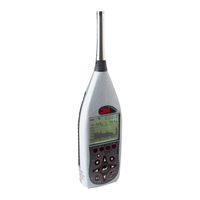User Manuals: 3M SP-SE-2-1/3 Sound Level Meter
Manuals and User Guides for 3M SP-SE-2-1/3 Sound Level Meter. We have 1 3M SP-SE-2-1/3 Sound Level Meter manual available for free PDF download: User Manual
3M SP-SE-2-1/3 User Manual (168 pages)
Sound Level Meter.
SoundPro SE series;
SoundPro DL series
Brand: 3M
|
Category: Measuring Instruments
|
Size: 1.89 MB
Table of Contents
Advertisement
Advertisement
